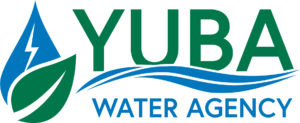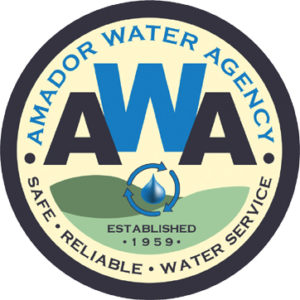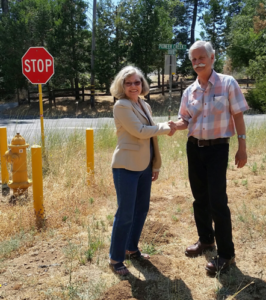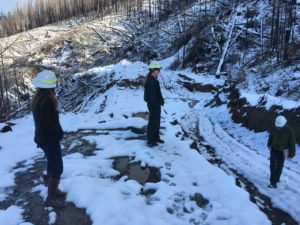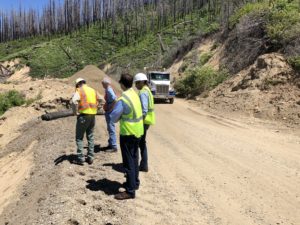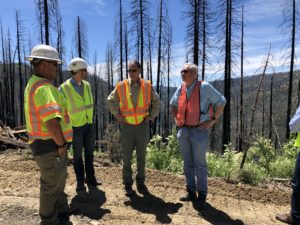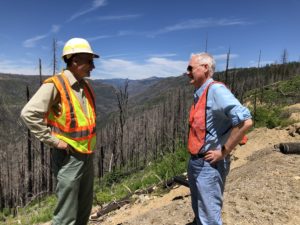 Opinion by: Dennis Mills, Supervisor Calaveras County
Opinion by: Dennis Mills, Supervisor Calaveras County
“This is a water grab, pure and simple”. The question is, what do the salmon have to do with this? It’s the red herring that is being used to support the need to a change in direction on the operations of the California Water Project. We need to look past the fish to the reasons for why the flows are being manipulated and why the state feels a need for reoperation of the project.
As the state continues to struggle with what many see as a water grab intended for fish flows in the Delta, allow me to explain a perspective that has been missed in this overall discussion. Having been on a recent tour of facilities in Orange County including those of the Metropolitan Water District (MET), and had direct conversations with agency managers and elected officials including those of MET, I can assure you water agencies in the south have a much tougher road in maintaining adequacy of safe water, than is discussed.
The best example is the treatment of waste water (sewage) into safe drinking water using reverse osmosis and pumping that water back into their basins for future use (Orange County Reclamation District). In that zone, over 85% of all sewage is treated and reused. Would you drink treated waste water? In Orange County, they do every day. The effort to keep salt water intrusion from affecting underground storage basins is immense in scope as they use high pressure injection wells along the coast to keep the salt water at bay by pumping treated wastewater into the zone as a buffer. Wastewater reclamation and the expense of treating it to safe standards is not cheap but it is a solution that Southern California feels is critical to the long-term stability of their water supplies.
For those in the north, we have a hard time accepting the cost per acre foot that is currently being expended in the south (many local agencies in our area charge under $10 per acre foot). Example, MET water delivered to their member agencies is roughly $700 per acre foot. Treated waste water is double that and the desalination plant at Carlsbad is priced at $2100 per acre foot. Southern California water agencies know they need reliability and dependability, no matter what the cost. There are no good ground water basins (due to geology) in the San Diego area. The Los Angeles area has five established basins to store water and they work tirelessly to store as much as possible to insulate themselves from droughts. Those basins have a combined storage capacity of less than New Melones while serving 19 million people in six counties. The result is their dependency on the CWP and Colorado River water is critical to stability of the region.
Colorado River water is different from California Water Project water. Colorado water is high in minerals and low in organics while Water Project water is high in organics and low in minerals. This creates treatment challenges as MET moves from one water source to another or blend water in their system. The Diemer facility alone can treat over 500 million gallons per day. Just to put this in perspective, that is 1,500-acre feet of water treated in one facility, daily.
In my discussions with MET, the Colorado River system is in depletion and being over-allocated, the fight for every drop is a continuing legal challenge. As the drought years linger in California, they also linger in the Rockies as well, leaving less water available for not only for use in California but Las Vegas, Lake Powell, Lake Mead, Arizona and others. Add to that, the reduced water storage and availability during the drought years on the California Water Project (CWP). MET primarily holds water rights at Oroville Dam and the Feather River. Everyone knows the problems at Oroville but there is a larger issue here. It is called pumping more than the system can deliver.
Anyone interested in the CWP system should spend time doing the research which we will not go into here. However, when the CWP system was designed, the intake to the aqueducts was placed at the Clifton Court Forebay near Tracy. Why this is important to the discussion will be understood as we progress. At this location eleven pumps pull over 10,000 cubic feet per second from Delta flows, when they are operating. This is equivalent to draining Lake Hogan in 15 days or Lake Tulloch in 3 days. The location is critical as there is so much water pulled so quickly at the bottom end of the Delta that it reverses flows leaving the Delta and pulls brackish water (where the delta smelt live) towards the south edge of the Delta. To make up for this current need to pump more water, the state is left with no option but to find additional water in the bottom of the Delta, to add into the zone to offset the pulling effect of these massive pumps.
Where is the only water going to come from? The Tuolumne, Stanislaus, Merced, and San Joaquin Rivers. Much of the CWP decision is based on allocation and use, with the Stanislaus having the most water stored at any given time and the fewest water rights holders to deal with, coupled with the water being the cleanest in the state. And there you have the reasons why the Stanislaus River has become the solution to a larger problem. The problem of how to prevent the CWP pumps from reversing flows and pulling salt water into the zone can only be addressed by adding more fresh water into the area. This is the water grab being spoken of and the CWP is using the issue of fish to support their argument for the need to help keep the Delta salt free and their pumps from taking in brackish water (and fish).
But there is another water rights holder that is not being discussed in the state decisions. The Federal Central Valley Project made up of Shasta, Folsom, New Melones, San Luis, Friant and other dams with a combined storage capacity of over 13 million-acre feet under contract to both municipal and agricultural users was created during the Depression to provide jobs to the agricultural region of the Central Valley. Again, if interested, review the history of this project created out of the Great Depression to put people to work in California. Keep in mind the Federal government has obligations to its users as well.
Under the guise of protecting fish as the sole indicator of the health of rivers, the state has taken control of the Federal water for their purposes which ultimately is the way to offset the reverse flows and damaging effects created by the CWP pumps located at the south edge of the Delta near Tracy.
It must be understood that Antioch and Pittsburg have also been directly affected by salt water intrusion as they are the first to feel the effects in their water supplies at the top of the Delta. Many industries that use fresh water have relocated away from those cities to find more stable fresh water sources. This discussion cannot be complete without understanding the need to keep fresh water flowing to those communities just as we are pumping it to Southern California.
The recent purchases of tracts of land in the Delta by MET was to gain the easements across those lands to bring the pumping intakes from the Clifton Court Forebay to a new location on the Sacramento River near the Consumnes River. It was not to take advantage of any riparian water rights or uses on those parcels as that water would be beyond their pumping intakes. I have been in the presentations by both Met and East Bay MUD on this issue. Both say the same thing, relocating the intakes to the direct source of MET water off the Sacramento River, thereby bypassing the pulling effects of the current pumping of water through the Delta and gaining a cleaner direct location to pump from, is the solution in their eyes. This would allow the rivers flowing into the south Delta to flow directly to the Bay and stop the reverse flows that are affecting not only the Delta, but the municipalities that take their water from the Delta.
But, the reality is moving the intakes to another place within the Delta ecosystem only moves the problem to a different location which could ultimately pull north Delta water into a reverse course affecting any municipality and agricultural user in the upper end of the Delta. Is that the best answer? I think not.


